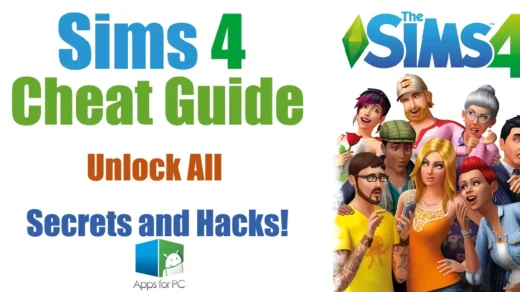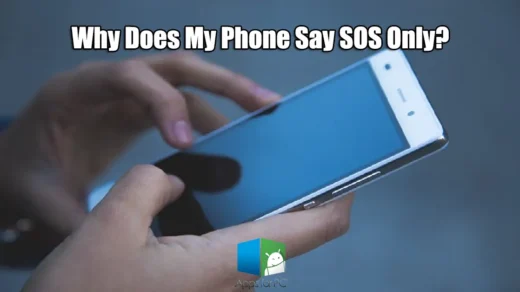What is the Windows 11 Media Creation Tool?
So, you’re itching to upgrade to Windows 11, huh? Well, the Windows 11 Media Creation Tool is your best buddy for that! This nifty tool from Microsoft lets you create installation media like a pro. Whether you want to use a USB flash drive or just download an ISO file, it’s got you covered. Just pop in your 8GB drive, and you can kickstart the installation process without a hitch. If you’re currently on Windows 10, you can also use it to upgrade your OS to Windows 11 Pro easily!
Now, if you’re feeling adventurous, you can even do a clean installation with that Windows 11 ISO file. Just make sure your CPU and motherboard are compatible with Windows 11 and that you’ve got a product key ready to go. You might wanna check the Microsoft Community for tips on partition setups or what to do if you’re booting in UEFI mode. Remember, the Windows 11 installation media section has all the details you need!
What Does the Media Creation Tool Do?
If you’re looking to create a Windows installation, the Windows Media Creation Tool is your best friend! This handy tool lets you download Windows and set up a Windows 11 installation media either on a USB flash drive or as an ISO file. Just make sure you’ve got at least 8GB of space available, ’cause you’ll need it for that 64-bit version of Win 11.
When you’re ready, just click download and follow the prompts to get your clean install rolling. If you’re using Windows 10, you might even be familiar with the Windows 10 Media Creation Tool. And hey, if you want to install this on another PC, the options are pretty flexible. You can either use a USB or create a bootable drive that meets the TPM 2.0 requirements. Just make sure to grab the latest version, like 23h2, to keep your setup fresh for 2025!
Why Should You Use the Media Creation Tool?
If you’re thinking about upgrading to a new version of Windows, you should definitely consider using the Media Creation Tool. It’s super handy for creating Windows 11 installation media or even Windows 10 using a USB flash drive or ISO file. Just download the media creation tool from the official Microsoft website and you’ll be on your way! You’ll need a flash drive with at least 8 GB to get started, and it makes the whole process a breeze.
Plus, if you’re setting up a new computer or want to reinstall, this tool helps you create the perfect installation media using a simple installer. It’s designed to help you create Windows on your terms, whether that’s a 32-bit or 64-bit operating system. Just make sure to check your BIOS settings to boot from the right drive. And if you’ve got a Windows product key, you can easily activate Windows once you’re done!
What Are the Benefits of Creating a USB Drive?
If you’re thinking about creating a USB drive for your Windows setup, you’re in for a treat! Using the media creation tool is super simple. Just download and use it to make bootable media on either a USB flash drive or either a USB you have lying around. If you want to install Windows 11 using the official Windows media tool, it’s all about choosing the right options for this PC and following the prompts.
Once you’ve got your stable internet connection, just wait for the download to complete and you’ll be ready to go! The tool offers two options for creating your bootable media, and if you’re willing to try performing a clean installation, you’ll be set. You can easily learn how to download files for Windows and get ready to install Windows 11 Home in no time!
How to Download the Windows 11 Media Creation Tool
Where Can You Find the Media Creation Tool?
If you’re looking to grab the Media Creation Tool, you’re in luck! Microsoft provides it right on their website, making it super easy to get your hands on. Just make sure you’re downloading the right Windows version for your setup. If you’re feeling adventurous, you can also try Rufus to create a bootable USB drive after using the Media Creation Tool. Just remember to use the recommended settings for the best results. Seriously, don’t skip that part! It’ll save you a ton of headaches when you’re installing the new Windows OS. Happy upgrading!
What Are the System Requirements for Downloading the Tool?
So, you’re thinking about using media creation tool? Awesome choice! But before you dive in, let’s talk about the system requirements you gotta keep in mind. First off, you’ll need a PC running Windows 10 or 11, and make sure it’s got at least 4GB of RAM. Seriously, don’t even try it with less—your computer will just hate you for it!
Also, don’t forget about storage space. You’ll need around 8GB of free space for the tool to work its magic. And if you’re planning to create a bootable USB, that’ll need at least 8GB too. Just a heads up—make sure your internet connection is solid for downloading. Happy creating!
How Do You Ensure a Safe Download?
Alright, so if you wanna make sure your downloads are safe, start by using media creation tool. This handy little thing helps you snag legit software right from the source. Just make sure you’re on the official website, you don’t wanna end up with some sketchy version. Next, always check those reviews and ratings before hitting that download button. And hey, keep your antivirus up to date! It’s like having a bouncer for your computer. Lastly, don’t forget to scan those files after downloading, just to be on the safe side. Better safe than sorry, right?
Preparing Your USB Drive for Windows 11 Installation
What Size USB Drive Do You Need?
If you’re wondering what size USB drive you need, it really depends on what you’re planning to store. For just transferring a few documents or photos, a 16GB or 32GB stick is usually more than enough. But if you’re looking to back up your entire music library or some high-res videos, go for something bigger, like 64GB or even 128GB. Don’t forget, prices have dropped a lot lately, so you might as well grab a bigger one and future-proof yourself!
Also, keep in mind that some fancy software or games can take up a ton of space, so it’s best to plan ahead. You don’t want to be stuck with a full drive halfway through a transfer, right? Just think about what you usually carry around, and you’ll be good to go!
How Do You Format the USB Drive?
Alright, so you wanna format your USB drive? No problem! First things first, plug that bad boy into your computer. Once it’s recognized, head over to “This PC” or “My Computer” and find your USB drive. Right-click on it and select Format. You’ll see a bunch of options pop up. Just choose the file system you want, like NTFS or FAT32, depending on what you need it for.
After that, you can give it a snazzy name in the Volume label section. Just make sure to uncheck the “Quick Format” box if you want a thorough clean. Hit Start and bam! Your USB is all set up and ready to roll.
Are There Any Specific USB Drive Recommendations?
If you’re diving into the world of USB drives, you might be wondering if there are any specific recommendations. Honestly, it really depends on what you need it for. If you’re just looking to store some files, a basic 32GB or 64GB drive from brands like SanDisk or Kingston will do the trick. But if you want to transfer large files or run applications, go for something like a 256GB or 512GB drive with USB 3.0 speeds for quicker transfers.
And hey, if you’re all about that style, there are some sleek designs out there, like those metal or wooden drives. They look cool and are durable too! Just remember, no matter what you choose, always check for good reviews to make sure you’re not getting a dud.
Using the Media Creation Tool to Create a Bootable USB Drive
How Do You Launch the Media Creation Tool?
So, you wanna know how to launch the Media Creation Tool? It’s super easy! First, just grab it from the official Microsoft website—make sure you’re downloading the right one. Once it’s on your computer, go ahead and double-click that downloaded file.
After that, you’ll see a pop-up asking if you wanna allow it to make changes—just hit Yes. The tool will fire up, and you’ll get to choose whether to upgrade your current PC or create a bootable USB. Just follow the prompts, and you’ll be good to go!
What Are the Steps to Create the Bootable USB Drive?
So, you wanna create a bootable USB drive? No worries, it’s pretty easy! First off, grab your USB drive and plug it into your computer. Make sure to back up any important stuff on it because, trust me, it’s gonna get wiped clean.
Next, you’ll need some software for this gig. You can use tools like Rufus or UNetbootin. Just download and launch it, then select your USB drive and the ISO file you want to burn.
Once everything’s set, hit that Start button and let the magic happen! It’ll take a few minutes, but soon enough, you’ll have a shiny new bootable USB drive ready to go.
What Options Should You Select During the Process?
So, when you’re diving into this whole process, there are a few options you definitely wanna keep an eye on. First off, make sure to check out the custom settings—they can really make a difference in how everything works for you. Don’t skip the notifications section, either; you wanna know what’s going on without feeling overwhelmed, right?
Also, consider the privacy settings. It’s super important to keep your stuff safe and secure. Lastly, if there’s a chance to personalize your dashboard, go for it! It makes everything way easier to navigate. Happy selecting!
Troubleshooting Common Issues
What Problems Might You Encounter During Creation?
So, when you’re diving into the whole creation process, you’re definitely gonna run into some bumps in the road. Like, you might hit that dreaded writer’s block where your brain just goes blank, and it feels like pulling teeth to get any ideas flowing. Then there’s the time crunch—you know, when deadlines loom and you’re scrambling to finish something that’s supposed to be your masterpiece. Oh, and don’t forget about those pesky self-doubts that creep in, making you second-guess every little choice you make. It’s all part of the ride, though!
How Can You Fix USB Drive Recognition Issues?
So, your USB drive isn’t showing up, huh? No worries! First off, try sticking it into a different USB port—sometimes the port just needs a little love. If that doesn’t work, head over to your Disk Management settings. You might need to assign a drive letter or even format it if it’s acting stubborn. Just remember to back up any important stuff first!
If you’re still having issues, restart your computer. It sounds basic, but you’d be surprised how often that does the trick. Also, check if the drivers are up to date; sometimes they just need a little refresh. Good luck!
What to Do If the Process Fails?
If things go south and the process fails, don’t freak out! First off, take a deep breath and give yourself a moment to chill. It happens to the best of us! Next, you should analyze what went wrong. Was it a lack of resources, or maybe something slipped through the cracks? Once you pinpoint the issue, it’s time to brainstorm some solutions. Get your team together and throw ideas around like confetti. Finally, don’t forget to document everything. Learning from the mess-up will help you crush it next time! You got this!
Conclusion: What’s Next After Creating Your USB Drive?
How Do You Use the USB Drive to Install Windows 11?
Alright, so you wanna use a USB drive to install Windows 11? First things first, grab a USB stick with at least 8GB of space. Plug it into your computer and head over to the Microsoft website to download the Media Creation Tool. It’s super easy, just follow the prompts until you hit the part where you choose to create installation media.
Next, select your language and edition, and then choose the USB flash drive option. The tool will do its magic, and soon enough, you’ll have a bootable USB. Once that’s done, pop it into the PC where you wanna install Windows 11, restart it, and boot from the USB. Just follow the on-screen instructions, and you’ll be all set!
What Are Some Post-Installation Tips?
So, you’ve just finished that epic DIY project, huh? First off, don’t forget to clean up the mess! Nobody wants to trip over leftover tools or scraps. Grab a broom and tidy up your space. It’ll make everything look way better!
Next up, give everything a good check-up. Make sure all the parts are working as they should. You don’t want to discover something’s off a week later! And hey, if you’ve installed something like a new appliance, remember to read the manual—it’s not just for decoration!
Lastly, don’t forget to show off your hard work! Snap some pics for social media, or invite friends over to admire your handiwork. You totally deserve the bragging rights!
Where Can You Find Additional Resources for Windows 11?
If you’re diving into Windows 11 and need some extra help, you’re in luck! There are tons of resources out there. First off, check out the official Microsoft website—it’s got all the guides and FAQs you could ever want. You can also hit up forums like Reddit or Microsoft Community where users share tips and tricks.
Don’t forget about YouTube, either! There are loads of awesome videos that walk you through features and troubleshooting. Lastly, grab a good book or e-book on Windows 11 if you like to read—lots of folks swear by them for in-depth info.




